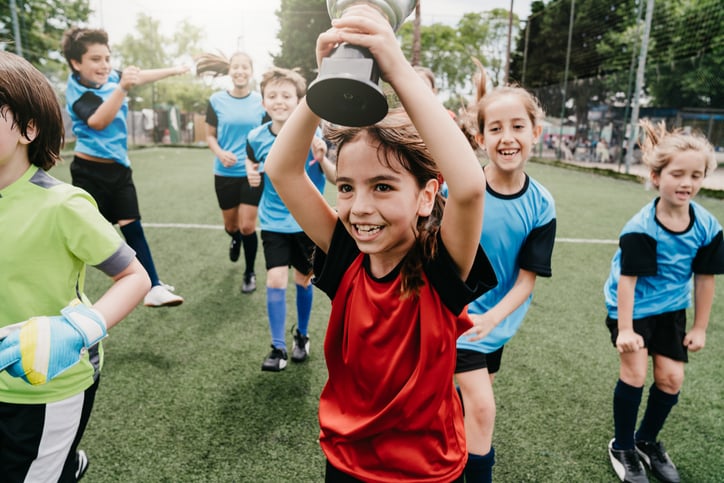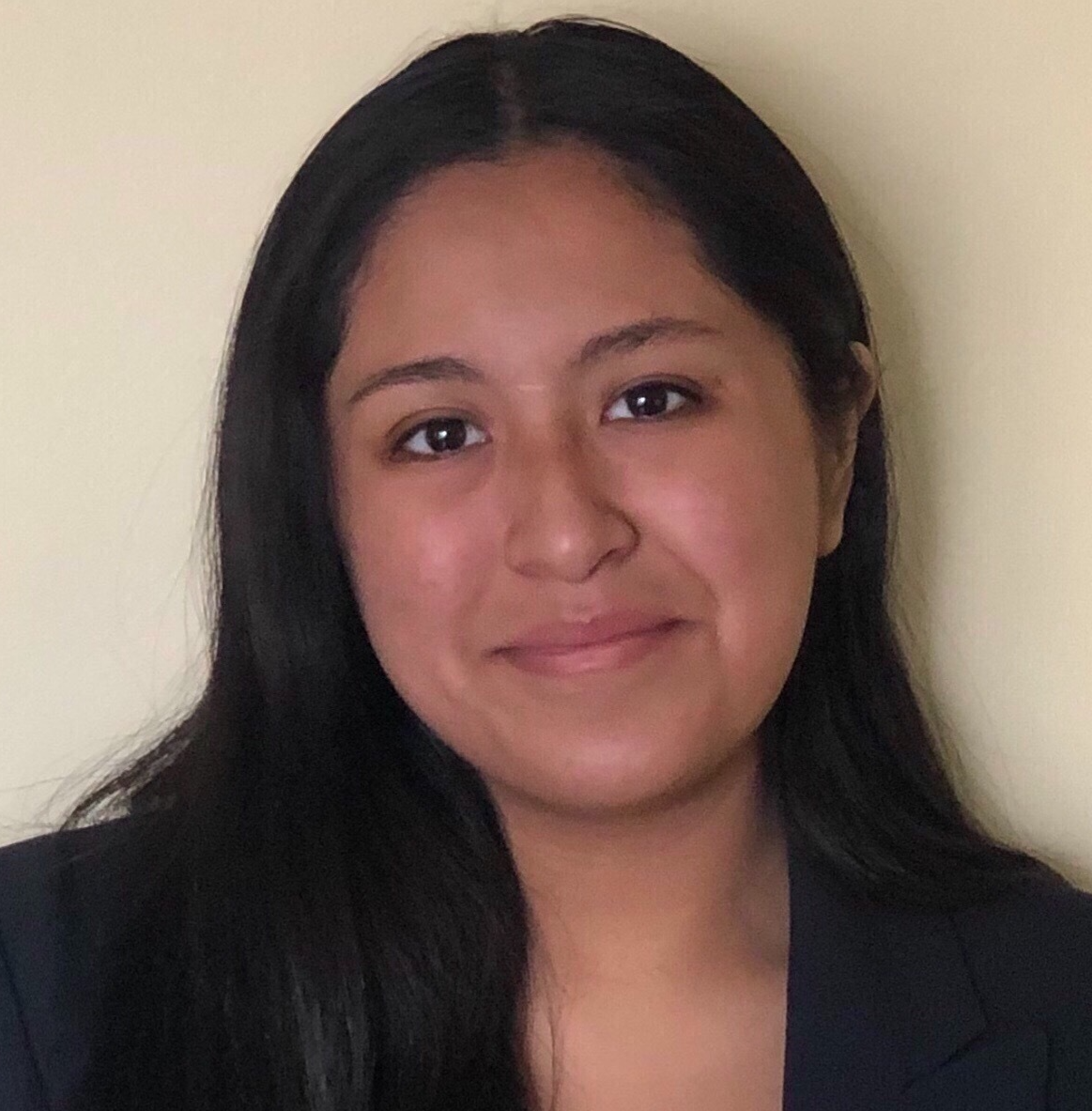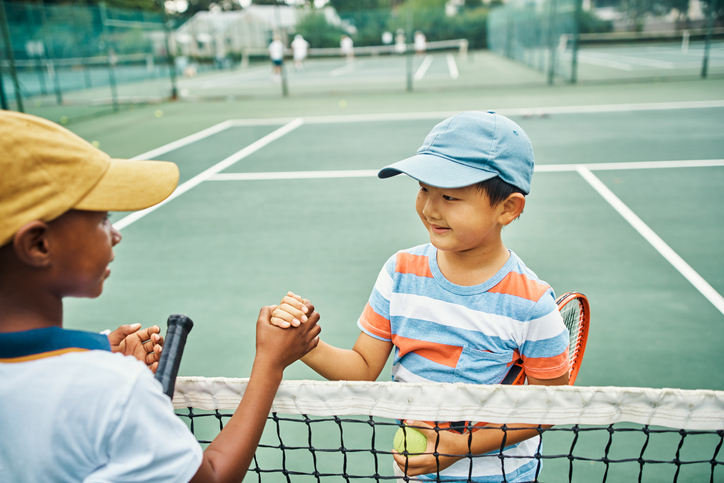Unified Sports: Getting Autistic Children Back in the Game
How can unified sports help autistic children, parents, and communities, given the lingering developmental effects of the pandemic?
Since 2020, adaptive and unified sports participation has increased by 163 percent, with unified sports, in particular, seeing the most prominent gains of a tenfold increase in high school athlete totals and an additional overall doubling of school district availability.10&2 These increases are likely due to the proven benefits of adaptive sports for people with physical conditions and unified sports benefits for people with intellectual or developmental conditions.
Unified sports, specifically, continue to support general education students as well as autistic students, or those with other developmental conditions, through an inclusive approach of equally balanced teams and physical education classes all playing under the same game rules.10
With consideration of the persisting developmental impairments from the pandemic, unified sports could be a fun and effective tool to engage autistic children and their parents while improving functioning in the domains of social skills, behavior management, and overall well-being.
Playing for Physical Health
For autistic or non-autistic children, physical activity has been correlated with positive improvements in motor skills, weight management, and general fitness.12 However, parents of autistic children may experience difficulty in finding an inclusive, autism-accessible, and enjoyable program for their child that would enable these long-term benefits.
Additionally, throughout the past three years, the physical health needs and challenges of autistic children have worsened with marked developmental deficits in physical and sensory-motor areas that are further exacerbated by ongoing staffing concerns for autism-focused services.1&7 As a result, unified sports programs at school or off-campus physical activities can potentially be a cost-effective and efficient solution for supporting physical fitness in autistic children within a safe and inclusive environment.
Programs also often utilize special education professionals, parents, and athletic coaches to help with sports selection and instruction optimization for students of all abilities.10&12 This can be especially useful for children with decreased skills as an outcome of the past few years or the ongoing reduced access to therapy.

Affective and Behavioral Benefits
With unified sports, parents have reported positive increases in their child’s happiness, confidence, sense of belonging, and motivation.8 Physical activity in autistic children has also been linked with improvements in social aptitude, mental health, and general behavior including repetitive or maladaptive reactive behaviors.9
These benefits can be effective in managing behavioral challenges lingering from the start of the pandemic, such as hyperactivity or aggression, which may be currently impacted by the unmet demand for special education teachers and occupational therapists.1&5 Moreover, beyond the explicit behavioral positives of unified sports, there are also abstract gains ranging from an accountability motivator to a genuine excitement consistency for autistic children resulting from the physical or social aspect of the sport.
Supplementing Social Skills and Circles
Undoubtedly, socialization is a common challenge area for children, but for autistic children, it can be a prominent difficulty further complicated by the evolving modes of interaction since 2020. While autistic and non-autistic children may not be able to regain those lost interactions and social skill-building opportunities from the past three years, they can naturally reengage socially through inclusive and unified sports.
Observed augmentations in the domains of psychosocial behavior, communication, and social skills have been seen in autistic children participating in physical activities or sports.9&6 Similarly, parents and students have also noted improved peer relationships resulting from unified sports participation.10&8 Thus, solidifying inclusive sports as an informal avenue for autistic children to learn new social skills and gain a community that may have been inconsistent or missing throughout the pandemic.
Positives for Parents
Parents of autistic children faced immense stress in 2020, and while conditions have definitely improved since then, the persisting economic and service availability factors may still continue to act as parenting stressors.4
Unified and inclusive sports programs could be a potential aid for parents by acting as an affordable and accessible respite beyond school days while simultaneously supporting the growth of autistic children. Furthermore, parents may also experience relief in the onus and pressure they’re currently experiencing for the skills training and general progress of their children, markedly within the context of varying learning and mental health demands existing throughout the country.5
Parents can also benefit from the social support and community aspect of unified sports, particularly with the involvement of other stakeholders of autistic children including teachers, volunteers, and caregivers.

Universal Post-Pandemic Benefits of Unified Sports
While the indirect ripple effects of unified sports participation may help with the present widely occurring student challenges, it’s worth noting that sports alone are not a panacea for the currently existing effects of the pandemic on children. However, in the face of learning loss and unabating well-being concerns for autistic or non-autistic students, unified sports can act as one fun and affordable way to help students and caregivers recalibrate in 2023.
Of its many benefits, unified sports have been linked to improved graduation rates for students with and without disabilities in addition to improved school engagement, further qualifying it as an apt tool for parents and children.10 Furthermore, the opportunity to see autistic children be a part of a team and grow through involvement in rapidly expanding unified sports programs is an immense positive gain for both parents and students.
The social experiences and skills autistic children develop from team sports can not only help with school but can persist into home life and adulthood.
How have unified and inclusive sports supported the development of your autistic child? Share your experiences and thoughts in the comments section below.
We hope you enjoyed the information in this article. STAGES® Learning also offers free downloadable resources to support teaching and learning with autistic individuals. Start with our free Picture Noun Cards and see our collection of other downloadable resources here!
References
- Al-Beltagi M, Saeed NK, Bediwy AS, Alhawamdeh R, Qaraghuli S. Effects of COVID-19 on children with autism. World J Virol. 2022 Nov 25;11(6):411-425. doi: 10.5501/wjv.v11.i6.411. PMID: 36483100; PMCID: PMC9724198.
- Baskin, K. (2023, February 1). We’re too tired to be helicopter parents. Our kids will be happier for it. BostonGlobe. https://www.bostonglobe.com/2023/02/01/magazine/were-too-tired-be-helicopter-parents-our-kids-will-be-happier-it/
- Baumgaertner, E. (2023, January 30). Students lost one-third of a school year to pandemic, study finds. The New York Times. https://www.nytimes.com/2023/01/30/health/covid-education-children.html
- Jacques C, Saulnier G, Éthier A, Soulières I. Experience of Autistic Children and Their Families During the Pandemic: From Distress to Coping Strategies. J Autism Dev Disord. 2022 Aug;52(8):3626-3638. doi: 10.1007/s10803-021-05233-z. Epub 2021 Aug 27. PMID: 34448994; PMCID: PMC8391854.
- Jones II, A. (2023, February 11). Most of the US is dealing with a teaching shortage, but the data isn't so simple. ABC News. https://abcnews.go.com/US/map-shows-us-states-dealing-teaching-shortage-data/story?id=96752632
- Morales J, Pierantozzi E, Fukuda DH, Garcia V, Guerra-Balic M, Sevilla-Sánchez M and Carballeira E (2022) Improving motor skills and psychosocial behaviors in children with autism spectrum disorder through an adapted judo program. Front. Psychol. 13:1067310. doi: 10.3389/fpsyg.2022.1067310
- Ritchie Jr., L. (2022, September 2). Autism centers say they are in a staffing crisis. MPR News. https://www.mprnews.org/story/2022/09/02/autism-centers-say-they-are-in-a-staffing-crisis
- Rodriquez J, Lanser A, Jacobs HE, Smith A, Ganguly S. When the Normative Is Formative: Parents’ Perceptions of the Impacts of Inclusive Sports Programs. International Journal of Environmental Research and Public Health. 2022; 19(17):10889. https://doi.org/10.3390/ijerph191710889
- Sefen JAN, Al-Salmi S, Shaikh Z, AlMulhem JT, Rajab E, Fredericks S. Beneficial Use and Potential Effectiveness of Physical Activity in Managing Autism Spectrum Disorder. Front Behav Neurosci. 2020 Oct 22;14:587560. doi: 10.3389/fnbeh.2020.587560. PMID: 33192368; PMCID: PMC7642468.
- Sparks, S. D. (2022, November 8). Unified sports level the playing Field for students with disabilities. Education Week. https://www.edweek.org/teaching-learning/unified-sports-level-the-playing-field-for-students-with-disabilities/2022/11
- Special Olympics. (n.d.). Unified sports. https://www.specialolympics.org/what-we-do/sports/unified-sports
- Vetri L, Roccella M. On the Playing Field to Improve: A Goal for Autism. Medicina (Kaunas). 2020 Oct 30;56(11):585. doi: 10.3390/medicina56110585. PMID: 33143343; PMCID: PMC7693132.

Amairani Asmad
Amairani Asmad is a freelancer with a Bachelor of Science degree in Rehabilitation and Human Services from Penn State. Her passion for helping people is motivated by her own experiences as a member and advocate of several marginalized communities. Amairani enjoys the positive impact of writing inclusive content and helping others using her education, personal experiences, and compassionate lens. Her goal is to continue learning while integrating her empathetic support for Neurodivergent, LGBTQIA+, and Latinx communities.




